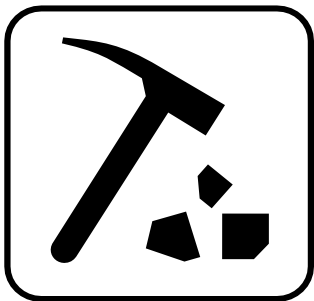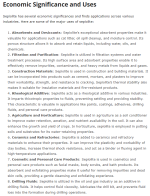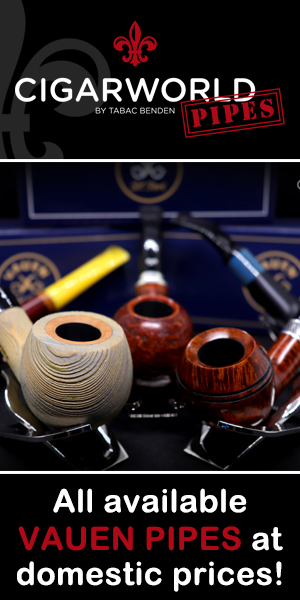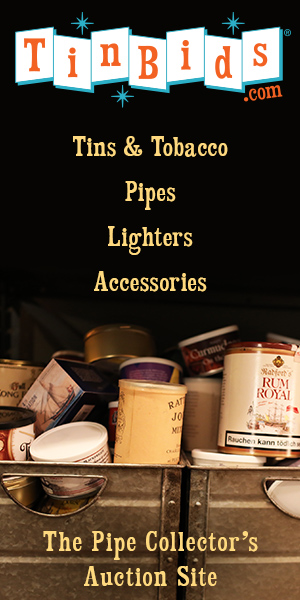Too esoteric a discussion for me. I was told at one time pressed meerschaum was from Africa. Don't know and don't care.
Is it Really Block Meerschaum?
- Thread starter Wheels
- Start date
You are using an out of date browser. It may not display this or other websites correctly.
You should upgrade or use an alternative browser.
You should upgrade or use an alternative browser.
SmokingPipes.com Updates
Watch for Updates Twice a Week
I wasn't attempting to be difficult, I simply didn't understand the need to know. Sometimes, ignorance is bliss. I also believe the only way to tell for certain if his.Meerchaum is block, or not, would be to slice it into pieces for examination. This seems counter to any logical level of curiosity.
You shouldn't assume my pragmatic approach to life is an attempt to be contrary. You should direct your passive aggressive BS elsewhere.
At least you're happy. Bye.
Permanent goodbye, you've been ignored.At least you're happy. Bye.
Yep.That one doesn't look heavily smoked. Wet your finger and touch the inside of the chamber. If it sticks it's block.
Another reason the OP's question is valid (besides simply his right to be curious and ask questions in a forum where he is most likely to get answers) is that if he figures this out now, on an inexpensive pipe, then in the future he'll be better equipped to make meerschaum purchasing decisions, and he'll know how to identify and deal with his meerschaum pipes, as block and pressed have different qualities and there will be times when you'll need to know this before working on them.
This pipe has only been smoked a few times, so it hasn't had enough use to color much. I prefer briar. My only other meerschaum is a calabash and it's hardly been smoked either.The fact that the bowl does not seem to be coloring very well, I would suggest that it is Pressed Meerschaum. Found this online:
Meerschaum pipes are fascinating! Let’s dive into the differences between block and pressed meerschaum:
Remember, the highest-quality meerschaum typically comes from Eskisehir, Turkey. Happy smoking!
- Weight: Block meerschaum pipes tend to be heavier than pressed ones. If you can compare the weight of a known block meerschaum pipe to another, you’ll get a sense of whether it’s block or not1.
- Texture: Lick your finger and touch the inside of the unsmoked bowl. If it feels sticky, it’s likely block meerschaum. If it doesn’t, it’s probably pressed. Keep in mind that this method might not work as well on used pipes2.
- Density and Patination: Pressed meerschaum pipes are made from scraps mixed with a bonding material and then pressed into blocks. These pressed blocks have higher density and won’t patinate or absorb color like block meerschaum. Block meerschaum is considered superior due to its quality and resistance to moisture degradation34.
Whether it matters if a pipe is genuine block is up to the owner. In my case it was simple curiosity. If it wasn't, I still wouldn't throw it away. In any case, specific gravity is the surest way to tell.
They’ll react differently to CA glue & JoJoba oil?Yep.
block and pressed have different qualities and there will be times when you'll need to know this before working on them.
I was just wondering; not trying to compel you to dunk it again.To tell the truth, I was so happy I forgot to do that. Now I'm going to have to do it over.
If the pressed meerschaum is incapable of floating, you have a definitive answer.
I don't own any pressed meers, but I've followed discussions that warned about how pressed responds to things that work fine with block. My point, which is intuitive to 99% of our members (including youThey’ll react differently to CA glue & JoJoba oil?
Soak it in water over night and if it turns into oatmeal it's not block meerschaum. 

This is interesting because i have many many meerschaum pipes, i just bought an estate meer that has an XL bowl and the very first thing i noticed was how lite it was, i was expecting it to be much heaver, larger bowl than my Said pipes yet much lighter. I assumed before even reading your post that this would color well, just because it makes sense right, very light material means that it's more porous on some level.The truth is there is not a lot of pressed meerschaum out there - it takes a lot to make pressed meerschaum and it was usually linings and calabash bowl inserts.
Meerschaum, The Past and Present - https://pipesmagazine.com/blog/pipe-collecting/meerschaum-the-past-and-present/
<< Snipped bits out >>
Just bought!: Over 60 years ago! And the price then seems about right for a decent block Meer.The OP just bought an inexpensive, possibly pressed, meer, with an orange non-amber stem. Maybe in the future he'll get interested in expensive fancy block meers with real amber stems. Hopefully as he wants to learn more, we'll help him rather than ask him what difference it makes.
You just defined pipe smoking. Disagreement is about all that pipe smokers can agree on.I seem to have a knack for starting threads that cause controversy. won't happen again.
This thread is making me want to have a smart @$$ comment as well but I shall refrain because I have no reason to rain on someone else's parade, nor to deflait anybody's ego. I take no joy in even posting this, I just want to express that what I have seen on this brief posting is really not something that a lurker should endure. Members Seasoned in the way of the codger crap talk can handle it, I'm not saying the OP can't (obviously he can) but what about the new lurkers that arent as well versed in the ways of the curmudgeon. This was not what I was expecting from such a simple non confrontational question.
Meerschaum/Sepiolite is a soft white clay, a natural material that varies in density, depending on mineral content. SG between 0.988 to 1.279, depending on porosity (low density and high porosity). Since block are not processed/mixed with other materials (just let dried then hardened) each localities will have different characteristic however minor, as facies differs between sedimentations.

 geologyscience.com
geologyscience.com
Also used as lubricant, fluid loss and viscosifier for Drilling



Also

Sepiolite | Properties, Formation, Occurrence, Uses » Minerals
Sepiolite, also known as meerschaum, is a clay mineral that belongs to the group of phyllosilicates. It is named after the Greek word "sepion," which means "cuttlefish bone," due to its resemblance to the internal skeleton of cuttlefish.
 geologyscience.com
geologyscience.com
Also used as lubricant, fluid loss and viscosifier for Drilling




Also
Last edited:
So basically, smoking a meer is like smoking cat litter? (I KID! IT IS A JOKE.)Meerschaum/Sepiolite is a soft white clay, a natural material that varies in density, depending on mineral content. SG between 0.988 to 1.279, depending on porosity (low density and high porosity). Since block are not processed/mixed with other materials (just let dried then hardened) each localities will have different characteristic however minor, as facies differs between sedimentations.

Sepiolite | Properties, Formation, Occurrence, Uses » Minerals
Sepiolite, also known as meerschaum, is a clay mineral that belongs to the group of phyllosilicates. It is named after the Greek word "sepion," which means "cuttlefish bone," due to its resemblance to the internal skeleton of cuttlefish.geologyscience.com
Also used as lubricant, fluid loss and viscosifier for Drilling

View attachment 311998
Also
I have six meers that I only occasionally smoke and none of them are coloring well but that is because none of them are everyday smokers for me. I'm pretty sure they are all block meerschaum.
I have had two unsmoked meerschaums that I bought in junktique stores that I've alwas assumed were pressed meerschaum because one cracked the first time I smoked it and the other broke into three pieces the first time it got hot. (I still have the one that cracked because it's a good looking saxophone meerschaum figural. I smoked it a second time and sealed the crack with superglue. It's a nice display pipe.)
I wasn't asking the OP, I was asking you what difference there was.I don't own any pressed meers, but I've followed discussions that warned about how pressed responds to things that work fine with block. My point, which is intuitive to 99% of our members (including you) is that we all need to know how to identify things we collect - both for purchasing decisions, and for maintenance;e.g-amber-colored acrylic or bakelite isn't the same as amber (duh), clay isn't the same as meerschaum (another 'duh', but ebay sellers often sell clay as meerschaum). The OP just bought an inexpensive, possibly pressed, meer, with an orange non-amber stem. Maybe in the future he'll get interested in expensive fancy block meers with real amber stems. Hopefully as he wants to learn more, we'll help him rather than ask him what difference it makes.







